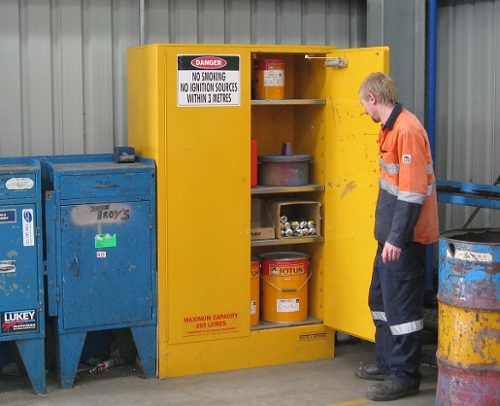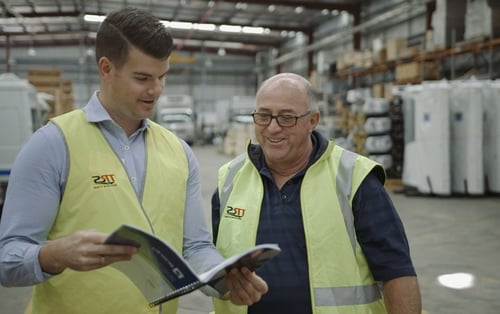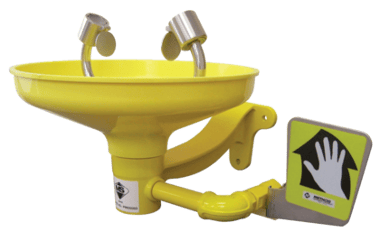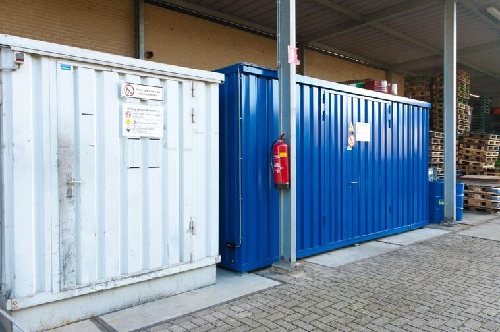If you’re operating a workplace in Tasmania that carries any type of Class 3 Flammable Liquids, this blog will help you achieve chemical compliance. We’ll be outlining key legislation, Codes of Practice and other guidance material that will help you keep the flammable liquids in your organisation safe and compliant.
IMPORTANT: Work health and safety legislation and compliance is regulated and enforced by WorkSafe Tasmania and the Tasmanian state government. We highly recommend familiarising yourself with the WorkSafe Tasmania website, so you can get a more comprehensive view of your compliance obligations.
WHS Laws and Regulation
In January 2013, the state of Tasmania adopted the harmonised workplace health and safety (WHS) legislation that was developed by Safe Work Australia. This means that throughout Australia, all states and territories have adapted with WHS laws to meet the consistent model of the WHS Act and Regulation. While individual states and territories do administer their own WHS laws, the compliance obligations and subsequent enforcement of these obligations is generally the same due to the harmonised legislation.

Every Tasmanian workplace has an obligation to provide a safe working environment that is free from hazards.
Therefore, the following legislation is applicable to every Tasmanian business or operation where work is conducted:
- Work Health and Safety Act 2012
- Work Health and Safety Regulations 2012
In general terms, workplaces are obliged under the act and regulations to undertake the following safety measures as part of their WHS compliance duties:
- Reduce risk through specific actions
- Introduce and maintain hazard controls
- Provide adequate administrative procedures
- Obtain any licences relevant to your business
Through following the guidelines provided by WHS, you can work towards minimising any risks associated with the particular hazards at your site. However, it’s important to note that WHS Regulations are only a general guideline and further assessment of your workplace is required for effective risk control measures.

An onsite risk assessment will determine the exact control measures that you need to implement for your flammable liquids handling and storage areas.
For workplaces that deal with flammable liquids, it’s vital that you carry out a risk assessment to determine the exact safety procedures and protocols that your operations require. If your personnel don’t have the expertise to conduct a chemical risk assessment, consider enlisting the services of a Dangerous Goods specialist who can help you minimise risk.
Compliance Obligations
Depending on the nature of the work you conduct, you may also have flammable liquids compliance obligations under the following:
- Dangerous Goods (Road and Rail Transport) Act 2010
- Dangerous Goods (Road and Rail Transport) Regulations 2010
- Explosives Act 2012
- Explosives Regulations 2012
- Mines Work Health and Safety (Supplementary Requirements) Act 2012
- Mines Work Health and Safety (Supplementary Requirements) Regulations 2012
Codes of Practice
Codes of Practice are designed to help a business owner meet their compliance obligations under the WHS Act and Regulations.
While following a Code of Practice is technically not compulsory, you may have difficultly proving you aren’t negligent in your duties if you don’t follow the code. In the event of a fire, explosion, chemical spill or serious onsite incident, you must prove that the measures you took
Depending on the type of work you conduct, any of the following Codes of Practice are approved under WHS Legislation in Tasmania, and may be applicable to your workplace:
1. Work Health and Safety Consultation, Cooperation and Coordination
This Code of Practice will help you carry out your duty to consult with the workers who use and handle Class 3 Flammable Liquids on the job site.
These workers must be consulted when developing safe operating procedures, purchasing fire protection equipment or making changes to the job site that will impact their health and safety.
2. Construction Work
We recommend following this Code of Practice if your workplace performs any type of construction work or is undergoing renovations. When working with a construction site, it’s important that any type of flammable liquids are stored properly – and are isolated from ignition sources such as hot work, power points and naked flames. Failure to do so can create a serious risk of fire, explosion or exposure to hazardous vapours.
3. Demolition Work
If there is demolition work being carried out on your workplace and you carry Class 3 Flammable Liquids, you’ll need this Code of Practice to ensure that chemical stores are not impacted or damaged. Make sure that each chemical hazard (fire, explosion, exposure) is included in site’s demolition risk assessment and emergency plan.
4. First Aid In The Workplace
Workplaces where people are exposed to large quantities of Class 3 Flammable Liquids (and other Dangerous Goods) are considered high risk workplaces due to the risk of human harm. Therefore, it’s important for workplaces that carry these kinds of chemicals to have specific requirements for first aid equipment, trained first aiders, safety showers and eyewash stations.

Refer to First Aid In The Workplace to learn more about achieving compliance in your flammable liquids handling and storage areas.
5. How To Manage Work Health And Safety Risks
This Code of Practice explains how to implement the specific requirements of the WHS Regulations to identify, assess and control the fire, explosion and exposure hazards related to flammable liquids. This includes how they interact with other materials and substances on the job site.
6. Labelling Of Workplace Hazardous Chemicals
To warn workers, contractors and site visitors about the dangers associated with flammable liquids, all hazardous chemicals must bear proper labels and display internationally accepted symbols and warnings. If you decant of transfer flammable liquids from their original drum or container, you must also ensure that these portable containers are labelled correctly.
7. Managing Risks Of Hazardous Chemicals In The Workplace
If you only follow the guidelines of one approved Code of Practice, make sure it’s this one. It explains the risk management process in detail and offers actual examples of known chemical controls and emergency planning for flammable liquids.
8. Managing The Work Environment and Facilities
Your work environment and facilities play a key role in flammable liquids compliance. You should use this Code of Practice to ensure that the working environment supports the safe use and storage of Class 3 Flammable Liquids. This includes consideration about the provision of ventilation and lighting as well as the specific layout of your chemical handling and storage areas.

Consider your handling and storage areas when taking the necessary steps towards minimising your flammable liquids hazards.
9. Spray Painting and Powder Coating
Many paints and solvents are highly flammable, and this Code of Practice will help you design work procedures and employ effective safety equipment to minimise the risk of fires and explosions during spray painting work.
Australian Safety Standard AS 1940:2017
We recommend familiarising yourself with the requirements of Australian Standard AS1940:2017 – The storage and handling of flammable and combustible liquids.
This comprehensive document will give you specific details and guidelines on how to safely and compliantly store and handle your Class 3 liquids.
You may refer to the Standard for specific information on the following flammable liquids compliance queries:
- Deciding whether to store flammable liquids indoors or outdoors.
- Purchasing a flammable liquids cabinet or outdoor store.
- Installation and location requirements for flammable cabinets and stores.
- Determining aggregate quantities for flammable liquids.
- Calculating the minimum capacity of spill containment facilities.
- Segregating different classes of dangerous goods
- Building vapour impervious barrier screens.
- Understanding, identifying and isolating ignition sources.
- Separating flammable liquids stores from protected and public places.
- Housekeeping practices for chemical storage areas.
- Emergency procedures for your organisation.
- The provision of safety showers and eyewash facilities.
- The use of personal protective equipment (PPE) during chemical usage.
- Appropriate dangerous goods signage and hazard signage.
Australian Dangerous Goods Code (ADG Code)
The ADG Code is issued by the National Transport Commission and underpins Dangerous Goods compliance in Australia.
Your organisation may refer to the ADG Code for further information on the:
- Requirements for Dangerous Goods placarding and labelling.
- Safe Segregation during usage, handling and storage.
- Purchasing safety equipment and carrying out emergency planning.
The ADG Code is an important resource for any type of workplace that carries Class 3 Flammable Liquids — not just freight and transport operators. The requirements of the ADG Code are extensive and are an excellent guideline to assist with flammable liquids compliance.
Keeping Tasmanian Businesses Compliant
While this blog provides a quick introduction to the Tasmanian legislation that applies to Class 3 Flammable Liquids, there are many more resources that can help you maintain a safe and compliant workplace. To learn more about flammable liquids compliance, why not download our helpful guide? Essential Considerations When Storing Flammable Liquids Indoors is an easy-to-read eBook that can help you take the next steps towards chemical compliance. It also explains how storing your flammable liquids in a compliant safety cabinet (manufactured to AS 1940:2017) will effectively reduce your chemical compliance risk.
For further assistance with risk assessments or flammable liquids control measures, you can always reach out to our local team. STOREMASTA is an internationally recognised Dangerous Goods compliance and storage specialist that’s conveniently based right here in Tasmania.
Joining the team as a Dangerous Goods Storage Consultant, Melissa Hampton became Storemasta's Marketing Manager in late 2021. With extensive knowledge and experience in chemical compliance, Melissa is responsible for leading the Marketing team and helping shape their marketing strategy. In her spare time, you can find Melissa hiking, swimming and enjoying the great outdoors in beautiful north-west Tasmania.
